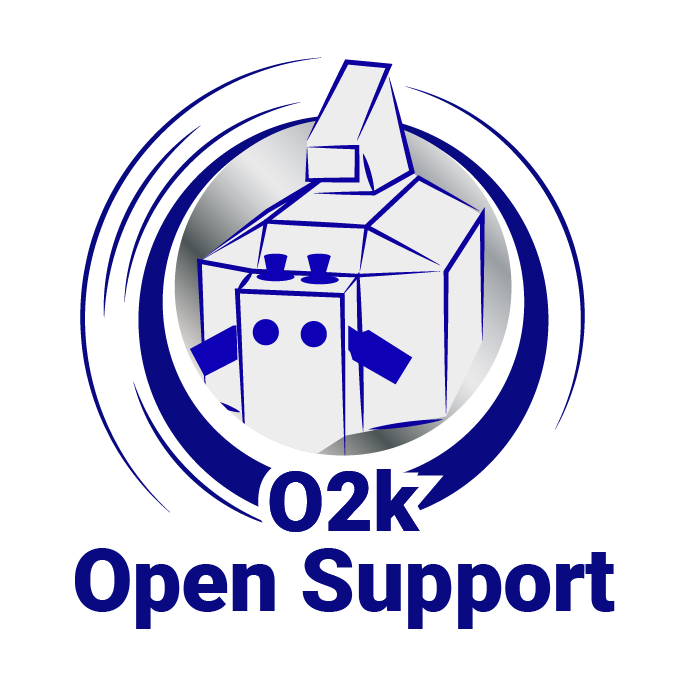Difference between revisions of "MiPNet21.16 DatLab 7"
| Line 7: | Line 7: | ||
|journal=Mitochondr Physiol Network | |journal=Mitochondr Physiol Network | ||
|abstract='''Gradl L, Gnaiger E, Capek O, Plattner C (2016) DatLab 7: innovations. Mitochondr Physiol Network 21.16(02):1-8.''' »[http://wiki.oroboros.at/index.php/File:MiPNet21.16_DatLab_7_innovations.pdf Versions] | |abstract='''Gradl L, Gnaiger E, Capek O, Plattner C (2016) DatLab 7: innovations. Mitochondr Physiol Network 21.16(02):1-8.''' »[http://wiki.oroboros.at/index.php/File:MiPNet21.16_DatLab_7_innovations.pdf Versions] | ||
:» Product: [[DatLab]], [[Oxygraph-2k|O2k]], [[OROBOROS O2k-Catalogue | O2k-Catalogue]] | :» Product: [[DatLab]], [[Oxygraph-2k|O2k]], [[OROBOROS O2k-Catalogue | O2k-Catalogue]] | ||
|mipnetlab=AT_Innsbruck_OROBOROS | |mipnetlab=AT_Innsbruck_OROBOROS | ||
}} | }} | ||
'''DatLab 7, our newly developed software, is a next step in high-resolution respirometry (HRR) incorporating legacy of previous DatLab versions and new, user-friendly features on quality control, documentation, and traceability of measurements with the Oroboros O2k.''' | |||
=== MultiSensor data aquisition: === | |||
DatLab 7 is optimized for [[O2k-MultiSensor |O2k-MultiSensor]] signal acquisition: oxygen, fluorescence (H2O2, mitochondrial membrane potential, calcium, ATP), ion selective electrodes, pX and nitric oxide sensors. At the heart of DatLab 7, a conceptual unification is obtained in calibrations and flux analysis of O2k-MultiSensor channels. As a result, multipoint calibration is now available for pX and for the amperometric channels. | |||
=== Display and graphs: === | |||
Graphs are further improved for real-time display and publication. Versatile options allow an optimal set-up of the graphical display of data. Standard, Lab and User-defined display layouts can be stored and organized to better handle various projects, sample types and protocols. | |||
=== Management of user accounts and experiments: === | |||
As a new feature, user accounts are assigned to each measurement for better traceability and customization. This facilitates the organization of experimental data and allows user-specific configurations in DatLab 7. A detailed description section, cohort, sample and subsample data in the “Experimental setup” improves organization and analysis of results. | |||
=== DatLab- (DL-) Protocols: === | |||
Besides keeping the flexibility to run user-defined experiments, DatLab 7 is now equipped with the DL-Protocol function. A collection of evaluated and tested DL-Protocols are available (in .DLP format) providing all necessary information (events, marks, titration volume and concentration). The user is guided stepwise through the protocol (displayed in the DL-Protocol window), facilitating calibration steps, minimizing handling errors and greatly improving performance during O2k measurements. Moreover, an automatic warning at low oxygen levels can be set. | |||
=== Events and marks: === | |||
Concentration and volume of the chemical added during SUIT protocols can be stored together with event names and comments. Automatic outlier detection helps to avoid unwanted data points when setting marks during respiratory steady-states. On top the user has the option to delete, interpolate or restore data points of marks. | |||
=== Mark statistics: === | |||
Numerous statistical functions are available for data analysis. “Marks statistics” organizes the marks and provides flexibility in displaying DL-Protocol marks, user-defined marks or both. The copy-to-clipboard function, with extended settings for backward compatibility, facilitates export to any third-party analysis software. | |||
=== Experimental log: === | |||
An experimental log enables to view and generate detailed report of experimental-, software- and hardware settings for optimal tracking of each experiment. | |||
=== Contextual help: === | |||
A hyperlink-based contextual help system provides optimal support throughout settings and experimental steps in DatLab 7. [[MitoPedia:_DatLab |MitoPedia]] provides the background for this function, which warranties up-to-date and verified information anytime. | |||
=== TIP2k control: === | |||
The software-driven, feedback-controlled [[TIP2k-Module |Titration-Injection microPump (TIP2k)]] is an integral part of the O2k. In DatLab 7 TIP2k control has improved and facilitates user friendly and more flexible programming. | |||
{{Labeling | {{Labeling | ||
|area=Instruments;methods | |area=Instruments;methods | ||
| Line 16: | Line 61: | ||
|additional=O2k-Manual, O2k-Core, DatLab | |additional=O2k-Manual, O2k-Core, DatLab | ||
}} | }} | ||
Revision as of 16:14, 10 July 2017
MiPNet21.16 DatLab 7
| DatLab 7: innovations. |
OROBOROS (2016-08-15) Mitochondr Physiol Network
Abstract: Gradl L, Gnaiger E, Capek O, Plattner C (2016) DatLab 7: innovations. Mitochondr Physiol Network 21.16(02):1-8. »Versions
- » Product: DatLab, O2k, O2k-Catalogue
• O2k-Network Lab: AT_Innsbruck_OROBOROS
DatLab 7, our newly developed software, is a next step in high-resolution respirometry (HRR) incorporating legacy of previous DatLab versions and new, user-friendly features on quality control, documentation, and traceability of measurements with the Oroboros O2k.
MultiSensor data aquisition:
DatLab 7 is optimized for O2k-MultiSensor signal acquisition: oxygen, fluorescence (H2O2, mitochondrial membrane potential, calcium, ATP), ion selective electrodes, pX and nitric oxide sensors. At the heart of DatLab 7, a conceptual unification is obtained in calibrations and flux analysis of O2k-MultiSensor channels. As a result, multipoint calibration is now available for pX and for the amperometric channels.
Display and graphs:
Graphs are further improved for real-time display and publication. Versatile options allow an optimal set-up of the graphical display of data. Standard, Lab and User-defined display layouts can be stored and organized to better handle various projects, sample types and protocols.
Management of user accounts and experiments:
As a new feature, user accounts are assigned to each measurement for better traceability and customization. This facilitates the organization of experimental data and allows user-specific configurations in DatLab 7. A detailed description section, cohort, sample and subsample data in the “Experimental setup” improves organization and analysis of results.
DatLab- (DL-) Protocols:
Besides keeping the flexibility to run user-defined experiments, DatLab 7 is now equipped with the DL-Protocol function. A collection of evaluated and tested DL-Protocols are available (in .DLP format) providing all necessary information (events, marks, titration volume and concentration). The user is guided stepwise through the protocol (displayed in the DL-Protocol window), facilitating calibration steps, minimizing handling errors and greatly improving performance during O2k measurements. Moreover, an automatic warning at low oxygen levels can be set.
Events and marks:
Concentration and volume of the chemical added during SUIT protocols can be stored together with event names and comments. Automatic outlier detection helps to avoid unwanted data points when setting marks during respiratory steady-states. On top the user has the option to delete, interpolate or restore data points of marks.
Mark statistics:
Numerous statistical functions are available for data analysis. “Marks statistics” organizes the marks and provides flexibility in displaying DL-Protocol marks, user-defined marks or both. The copy-to-clipboard function, with extended settings for backward compatibility, facilitates export to any third-party analysis software.
Experimental log:
An experimental log enables to view and generate detailed report of experimental-, software- and hardware settings for optimal tracking of each experiment.
Contextual help:
A hyperlink-based contextual help system provides optimal support throughout settings and experimental steps in DatLab 7. MitoPedia provides the background for this function, which warranties up-to-date and verified information anytime.
TIP2k control:
The software-driven, feedback-controlled Titration-Injection microPump (TIP2k) is an integral part of the O2k. In DatLab 7 TIP2k control has improved and facilitates user friendly and more flexible programming.
Labels: MiParea: Instruments;methods
HRR: O2k-Manual
O2k-Manual, O2k-Core, DatLab
DatLab O2k-Manuals
| Chapter | Section | Last update |
|---|---|---|
| MiPNet06.03 POS-calibration-SOP | O2k Quality Control 1: Polarographic oxygen sensors and accuracy of calibration. | 2023-02-06 |
| MiPNet12.10 TIP2k-manual | Titration-Injection microPump TIP2k manual. | 2021-07-08 |
| MiPNet14.06 Instrumental O2 background | O2k Quality Control 2: Instrumental oxygen background correction and accuracy of oxygen flux. | 2023-10-19 |
| MiPNet15.03 O2k-MultiSensor-ISE | O2k-MultiSensor system with ion selective electrodes (ISE). | 2021-08-02 |
| MiPNet17.05 O2k-Fluo LED2-Module | O2k-Fluo LED2-Module. | 2021-06-22 |
| MiPNet19.01 O2k-Core Manual Series F DatLab 5 | O2k-Core Manual - up to O2k-Series F and DatLab 5. | 2014-03 |
| MiPNet19.18 O2k-Series G Core manual | O2k-Core manual contents. | 2016-08-08 |
| MiPNet19.18A O2k-Series G: Start | Oxygraph-2k: start high-resolution respirometry. | 2016-08-08 |
| MiPNet19.18C DatLab 6: Guide | DatLab-guide through the menus. | 2016-08-24 |
| MiPNet19.18E O2 flux analysis - DatLab 6 | Oxygen flux analysis: DatLab real-time. | 2016-08-08 |
| MiPNet22.11 O2k-FluoRespirometer manual | O2k-FluoRespirometer manual. | 2023-03-14 |
| MiPNet23.15 O2k-pH ISE-Module | Measurement of proton flux with the O2k-pH ISE-Module. | 2018-09-08 |
| MiPNet24.14 O2k-sV-Module manual | O2k-sV-Module manual. | 2020-03-17 |
| MiPNet26.06 DatLab 7: Guide | DatLab-guide through the menus. | 2021-06-02 |







